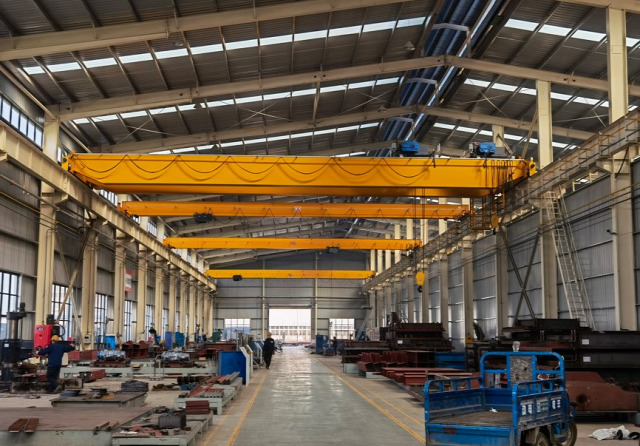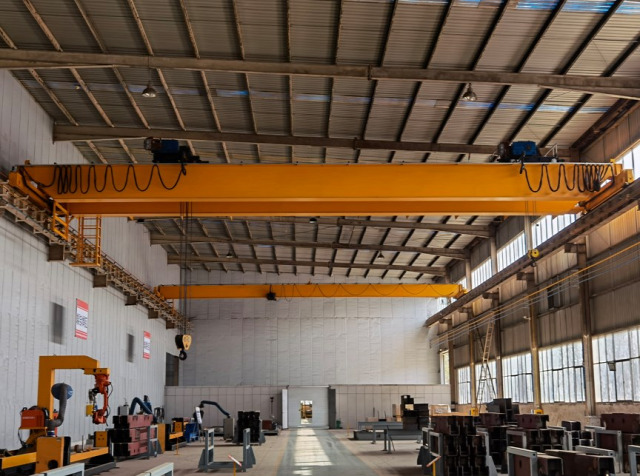Electric Overhead Traveling (EOT) cranes are crucial in various industries, from manufacturing and construction to shipping and logistics. While these cranes enhance operational efficiency, their operational costs can become a significant concern for businesses. Reducing these costs is essential for maintaining profitability and ensuring long-term sustainability. This article provides actionable tips for lowering the operational costs of EOT cranes, focusing on maintenance, energy efficiency, and operational practices.

1. Implement a Robust Maintenance Schedule
A well-planned maintenance schedule is fundamental in extending the lifespan of your EOT crane and preventing costly repairs. Regular maintenance helps in identifying potential issues before they become major problems, thus avoiding unexpected breakdowns and downtime.
Preventive Maintenance: Establish a preventive maintenance plan that includes routine inspections, lubrication, and cleaning of crane components. This plan should adhere to the eot crane manufacturer recommendations and industry standards. Regularly inspect critical components such as hoists, gears, and brakes to ensure they are in good working condition.
Predictive Maintenance: Utilize predictive maintenance techniques, such as vibration analysis and thermal imaging, to detect early signs of wear and tear. Predictive maintenance helps in scheduling repairs or replacements before failure occurs, minimizing downtime and extending equipment life.
Maintenance Records: Keep detailed records of all maintenance activities. These records can help in tracking the performance of the crane and identifying patterns that may indicate underlying issues.

2. Optimize Energy Efficiency
Energy costs can account for a significant portion of the operational expenses of Aicrane EOT cranes. Improving energy efficiency not only reduces costs but also contributes to environmental sustainability.
Regular Inspection of Electrical Components: Regularly check electrical components such as motors and drives for signs of inefficiency or wear. Faulty electrical components can lead to increased energy consumption and reduced crane performance.
Upgrade to Energy-Efficient Motors: Consider upgrading to energy-efficient motors and drives. Modern motors with high efficiency ratings can significantly reduce energy consumption, leading to lower operational costs.
Optimize Load Handling: Ensure that the crane is operated within its designed load capacity. Overloading the crane can cause excessive strain on the motor and other components, leading to higher energy consumption and potential damage.
3. Implement Operator Training Programs
Proper training for crane operators is crucial in ensuring efficient and safe crane operations. Well-trained operators can maximize the crane’s performance and reduce wear and tear, leading to lower operational costs.
Training Programs: Invest in comprehensive training programs for your crane operators. These programs should cover safe operating procedures, load handling techniques, and basic maintenance practices.
Refresher Courses: Conduct regular refresher courses to keep operators updated on the latest safety protocols and operational best practices. Continuous education helps in maintaining high operational standards and minimizing the risk of accidents.
Performance Monitoring: Monitor operator performance and provide feedback to improve their skills and efficiency. Efficient operators can handle loads more effectively, reducing the strain on the crane and lowering operational costs.
4. Use Advanced Crane Control Systems
Modern EOT cranes are equipped with advanced control systems that offer various features to improve efficiency and reduce operational costs.
Variable Frequency Drives (VFDs): Install VFDs to control the speed of the crane’s motors. VFDs allow for smooth acceleration and deceleration, reducing energy consumption and minimizing mechanical wear.
Load Sensing Systems: Implement load sensing systems to ensure that the crane operates within its safe working load limits. These systems can prevent overloading and reduce stress on crane components, leading to lower maintenance costs.
Remote Monitoring: Utilize remote monitoring systems to track the crane’s performance in real-time. Remote monitoring can help in identifying issues early and optimizing crane operations for better efficiency.
5. Optimize Crane Usage
Efficient crane usage practices can significantly impact operational costs. By optimizing how and when the crane is used, businesses can reduce unnecessary wear and tear and improve overall efficiency.
Scheduled Operations: Plan and schedule crane operations to avoid unnecessary usage. Consolidate tasks to minimize the number of crane cycles and reduce operational wear.
Avoid Idle Time: Ensure that the crane is not left idle for extended periods with the load suspended. Prolonged idle time can lead to increased energy consumption and unnecessary wear on the crane’s components.
Load Optimization: Handle loads efficiently by optimizing load placement and minimizing travel distances. Proper load handling reduces the amount of time the crane spends in motion, leading to lower energy consumption.
6. Regularly Review and Update Procedures
Regularly reviewing and updating operational procedures can help in identifying areas for improvement and ensuring that best practices are followed.
Operational Audits: Conduct regular operational audits to assess the efficiency of crane operations and identify areas for cost reduction. Audits can help in pinpointing inefficiencies and recommending improvements.
Procedure Updates: Update operational procedures based on audit findings and technological advancements. Implementing new procedures or technologies can lead to improved efficiency and reduced operational costs.
Feedback Loop: Establish a feedback loop where operators and maintenance staff can provide input on potential improvements. Engaging with frontline employees can offer valuable insights into operational challenges and opportunities for cost reduction.
7. Invest in Upgrades and Modernizations
Investing in upgrades and modernizations can offer long-term cost savings by improving crane performance and reducing maintenance requirements.
Crane Modernization: Consider modernizing older cranes with new technologies such as advanced control systems and energy-efficient components. Modernization can improve efficiency and reduce the likelihood of breakdowns.
Upgrade Components: Replace outdated or worn components with high-quality, durable parts. Upgraded components can improve crane performance and reduce the frequency of repairs.
Technology Integration: Integrate advanced technologies such as automated load handling and data analytics to enhance crane operations and optimize performance.
Conclusion
Reducing the operational costs of EOT cranes involves a combination of preventive maintenance, energy efficiency, operator training, and technology integration. By implementing these tips, businesses can enhance crane performance, extend equipment lifespan, and lower overall operational expenses. Investing in regular maintenance, upgrading components, and optimizing crane usage are essential steps in achieving cost savings and ensuring the long-term success of your EOT crane operations.

